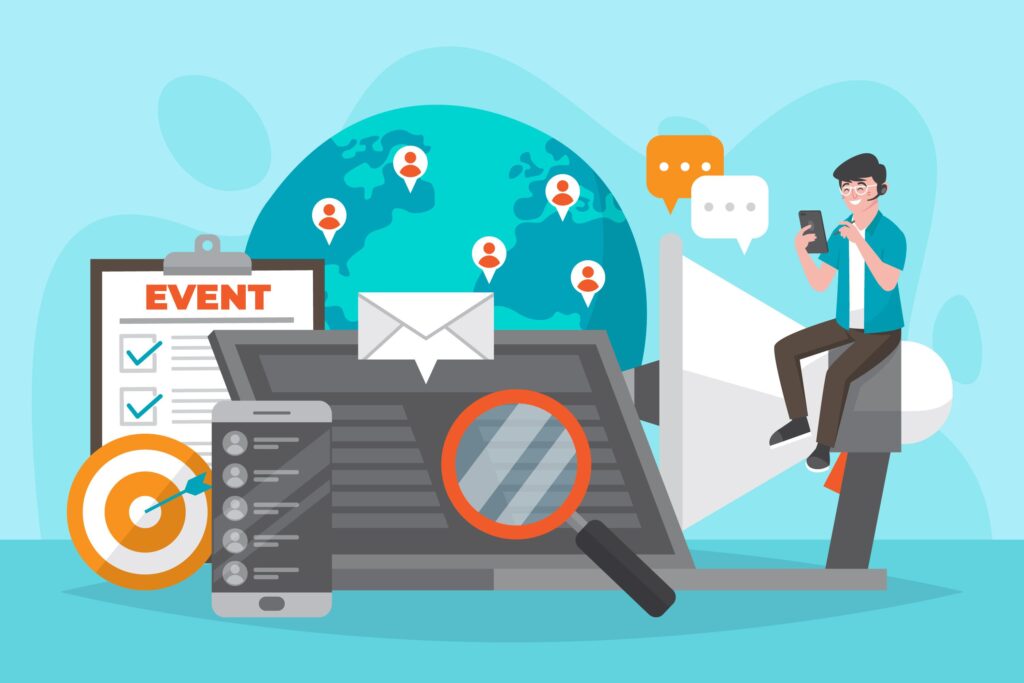![]()
![]()
In today’s fast-paced digital landscape, hosting a successful event goes beyond flawless execution — it’s about creating moments that people want to share. The future of event marketing is driven by creativity, technology, and emotional connection. Whether you’re planning a corporate conference, product launch, or music festival, making your event go viral requires a strategic mix of storytelling, digital innovation, and audience engagement.
This blog explores how you can transform your event into an unforgettable viral experience by leveraging the latest trends in the future of event marketing — from artificial intelligence and influencer collaborations to immersive digital experiences and real-time engagement strategies.
Read More: How to Stand Out in Graduate Job Applications: Tips from UK Recruiters
Understanding the Future of Event Marketing
The future of event marketing is about experiences that merge the physical and digital worlds. Events are no longer limited to venues or ticket sales; they are now powerful storytelling platforms that connect people globally. With audiences expecting personalisation and innovation, marketers must rethink traditional approaches.
Emerging technologies such as augmented reality (AR), virtual reality (VR), and AI-powered analytics are redefining how brands engage with participants. Furthermore, sustainability and inclusivity have become central to event planning, shaping brand reputation and audience trust.
To make your event go viral, you need to align creativity with data, authenticity with storytelling, and technology with human emotion — the true essence of the future of event marketing.
1. Craft a Powerful Event Story
Every viral event begins with a story that resonates. People are naturally drawn to narratives — they want to feel part of something meaningful. The future of event marketing emphasises the emotional connection between a brand and its audience.
Start by defining your event’s “why.” Why does it exist? What problem does it solve? What emotion do you want to evoke? Once you identify this, weave that narrative through every touchpoint — from your promotional content to your on-site experience.
Use compelling visuals, behind-the-scenes videos, and authentic testimonials to humanise your event. When your story is relatable and inspiring, attendees are more likely to share it, amplifying its reach across platforms.
2. Leverage Social Media for Pre-Event Buzz
Social media remains the backbone of viral event campaigns. The future of event marketing depends on how effectively you use social platforms to build anticipation and engagement.
Start your promotion early by launching teaser posts, countdowns, and interactive polls. Create branded hashtags to unify conversations and make tracking easier. Encourage early registrants or influencers to share their excitement using your event tag.
Short-form videos, such as reels and TikToks, perform exceptionally well for event promotion. They allow you to showcase snippets of what’s coming, giving audiences a taste of the experience. Live Q&A sessions, influencer collaborations, and contests can also drive user-generated content, further expanding your reach.
Remember, virality isn’t accidental — it’s planned. Every post should serve a purpose in your marketing funnel, from awareness to conversion.
3. Incorporate Influencer and Community Marketing
Influencer marketing plays a vital role in the future of event marketing. Collaborating with influencers who align with your brand values can significantly boost visibility and credibility. Influencers bring authenticity — their followers trust their opinions and are more likely to engage with the events they endorse.
However, don’t just focus on macro-influencers with millions of followers. Micro and nano influencers often have stronger community bonds and higher engagement rates. Partnering with niche voices within your industry can help you reach a more targeted audience.
Beyond influencers, build communities around your event theme. Use platforms like Discord, Facebook Groups, or LinkedIn communities to keep conversations alive before, during, and after the event. This creates long-term engagement, turning attendees into brand advocates.
4. Use Data and AI for Personalised Experiences
One of the most exciting shifts in the future of event marketing is data-driven personalisation. Modern audiences expect tailor-made experiences, not generic ones. Using AI and analytics, you can gather insights about attendee preferences, behaviour, and interests.
For example, AI can recommend personalised event sessions, send real-time notifications about relevant activities, or match attendees with networking opportunities based on shared interests. Predictive analytics also help marketers forecast attendance rates and optimise campaigns accordingly.
By integrating these tools, you not only improve the user experience but also enhance engagement and satisfaction — key factors that contribute to viral success.
5. Blend Physical and Virtual Experiences
Hybrid events have become a cornerstone of the future of event marketing, combining the best of in-person and online participation. They allow you to reach a global audience while maintaining the immersive feel of a physical event.
To make your hybrid event go viral, create engaging content that translates across both spaces. Offer live streaming options, virtual networking lounges, and interactive Q&A sessions. Encourage remote attendees to share screenshots, testimonials, or reactions in real time.
Virtual reality and 3D environments are also reshaping how people experience events. These technologies provide immersive interactions that transcend geographical barriers, giving audiences a sense of “being there” even when they’re miles away.
6. Encourage User-Generated Content (UGC)
In the future of event marketing, your audience becomes your biggest promoter. User-generated content can create a ripple effect that expands your reach exponentially.
Encourage participants to share photos, videos, or stories using your event hashtag. Offer incentives like giveaways or feature fan posts on your official channels to increase motivation. You can also create photo booths, branded props, or digital backdrops that make sharing irresistible.
When attendees share authentic content, it builds trust and excitement among their networks, driving new audiences to engage with your brand.
7. Integrate Sustainable and Ethical Practices
Sustainability is no longer optional — it’s a defining element of the future of event marketing. Modern audiences are environmentally conscious and value brands that take responsibility.
Reduce paper waste through digital ticketing, encourage eco-friendly transportation, and partner with vendors who follow sustainable practices. Highlight these efforts in your marketing to show authenticity and transparency.
Ethical marketing also extends to inclusivity — ensuring your events are accessible to people of all backgrounds and abilities. By championing inclusivity and sustainability, you create a positive brand image that resonates globally.
8. Create Shareable and Interactive Experiences
The more interactive your event, the higher its chances of going viral. Gamification, live polls, and augmented reality filters are transforming how people engage during events. The future of event marketing revolves around these shareable, dynamic experiences.
For instance, you can design scavenger hunts that reward participants for completing specific actions or use AR photo zones to encourage instant sharing. Integrating QR codes that lead to digital prizes or event highlights can also make the experience memorable and interactive.
When attendees are part of the action, they naturally become promoters of your brand story.
9. Follow Up and Maintain Post-Event Engagement
A viral event doesn’t end when the lights go out — it lives on through post-event marketing. The future of event marketing focuses heavily on long-term engagement.
Send personalised thank-you emails, share highlight reels, and post behind-the-scenes recaps. Encourage attendees to leave feedback and share their experiences. Hosting post-event webinars or community discussions can keep your audience connected until the next event.
This continuous engagement transforms one-time attendees into loyal supporters and future brand advocates.
Read More: Virtual Networking in 2025: New Rules of Engagement
10. Measure Success and Optimise for the Next Event
The final step in achieving viral success is data analysis. The future of event marketing relies on performance measurement to identify what worked and what didn’t.
Track engagement metrics such as hashtag mentions, social shares, click-through rates, and sentiment analysis. Use event management tools to collect attendee data and feedback.
By understanding audience behaviour, you can refine your strategy, ensuring your next event performs even better. Remember, virality is not just about reach — it’s about meaningful engagement and lasting impact.
Conclusion
The future of event marketing is bright, bold, and boundary-breaking. It’s no longer just about hosting an event but about crafting a multi-dimensional experience that captivates audiences before, during, and after the occasion.
To make your event go viral, focus on authenticity, leverage technology, encourage participation, and create emotional connections that last. When done right, your event won’t just attract attention — it will become a shared story that lives on in the hearts and minds of your audience.
Get an internship opportunity in the United Kingdom & join a wide professional network to unlock opportunities! Join us: www.stunited.org
Get Personal Branding to boost your CV and get optimum job and interview assistance: www.brandme4job.com
Contact us to get Career Assistance in the UK: Call Us Now!





Responses